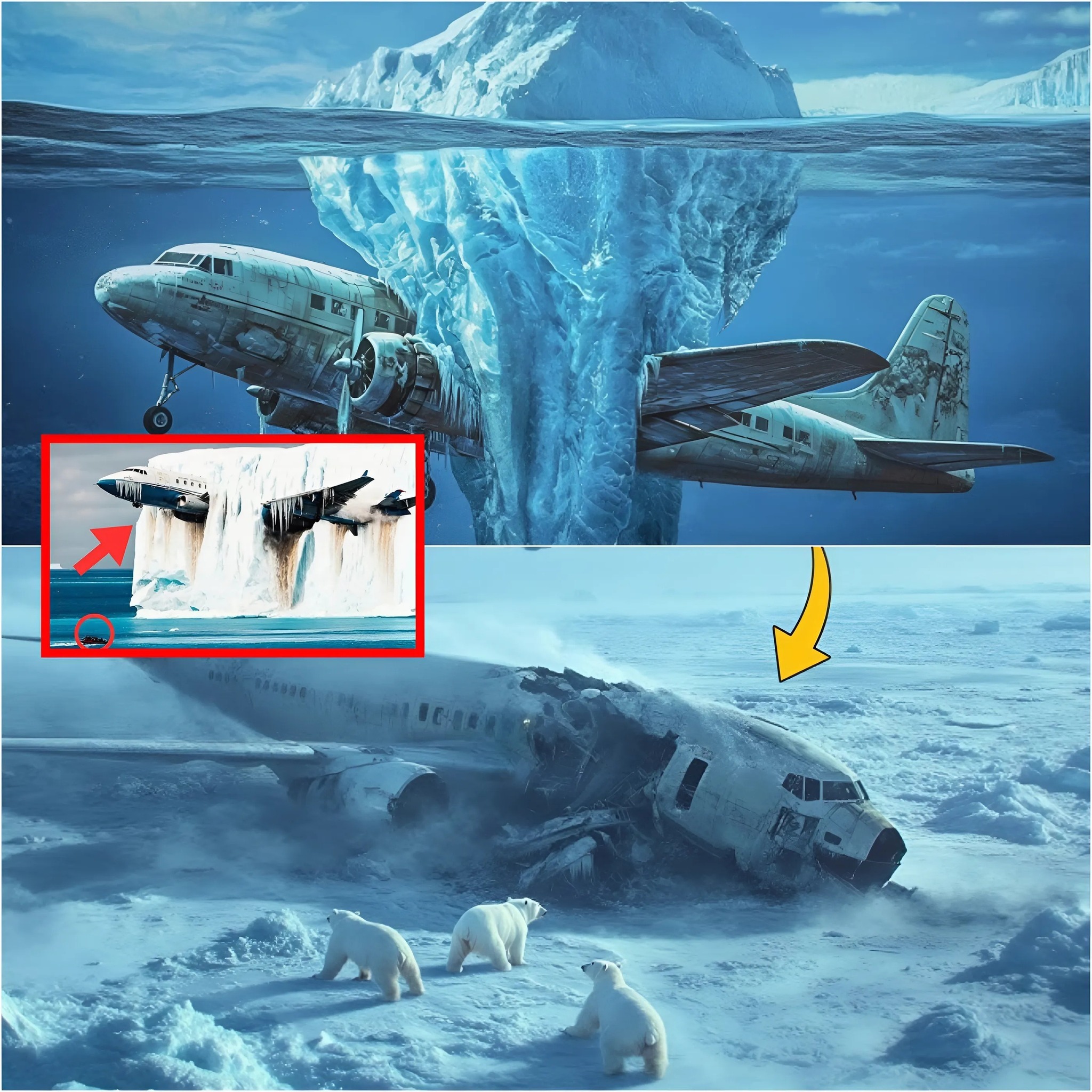Frozen in Time: The Enigmatic 1950s Airliner Beneath the Glacier

In a discovery that reads like a frozen page from aviation history, explorers have uncovered the remarkably preserved remains of a 1950s airliner deep within a remote glacier. Encased in ice for decades, the aircraft’s fuselage remains largely intact, offering a haunting glimpse into mid-century aviation and the lives of those aboard. This frozen relic is a silent testament to a vanished era, inviting scientists, historians, and adventurers to piece together its mysterious past.
A Mid-Century Airliner Preserved

The ice has acted as nature’s perfect preservative, maintaining the structure of the fuselage, wings, and cockpit. Even small details—luggage, uniforms, flight instruments, and cabin fittings—remain visible, giving researchers a unique opportunity to study the design, materials, and everyday life of aviation in the 1950s. The clarity of preservation is extraordinary, offering insights into aircraft construction techniques and passenger amenities of the time.
This discovery is not only a historical treasure but also a portal into human stories frozen in time. Each artifact inside the cabin, from flight manuals to personal belongings, contributes to a narrative of a journey abruptly halted, creating a poignant connection between the present and the mid-20th century.
Investigating the Mystery
How the airliner ended up entombed so far from any recorded flight paths remains a profound question. Experts are considering multiple scenarios: navigational error, extreme weather conditions, or mechanical failure. The location suggests a dramatic and unexpected course deviation, and the surrounding glacial terrain has preserved the aircraft far beyond expectations.
Investigators are combining historical flight records, meteorological data, and forensic examination of the wreck to reconstruct the final moments of the flight. Radiocarbon dating of organic materials, metallurgical analysis of aircraft components, and examination of ice stratigraphy are helping to establish a timeline for the crash and the subsequent encasement in ice.
Historical and Cultural Significance

The discovery of this frozen airliner provides a rare opportunity to study mid-20th-century aviation in an untouched context. Beyond technical insights, it offers a human connection to a period when air travel was becoming increasingly common yet still fraught with challenges. The preservation of luggage, flight logs, and personal items adds depth to our understanding of the era, highlighting both the technological achievements and vulnerabilities of early commercial aviation.
Moreover, this find draws attention to the power of glacial preservation as a historical archive. Remote ice fields, once considered barren and inaccessible, now reveal stories that might otherwise have been lost to time, reminding us of the interplay between natural processes and human history.
Conclusion
The discovery of the 1950s airliner beneath the glacier is both a scientific treasure and a haunting chronicle of aviation history. Preserved in ice for decades, it offers unparalleled insights into mid-century flight, passenger life, and aircraft engineering. While the mysteries surrounding its final journey remain, the frozen aircraft stands as a monument to human exploration, the power of nature, and the enduring stories that lie hidden beneath the ice. As researchers continue to investigate, this icy tomb promises to illuminate a forgotten chapter in the history of flight.











